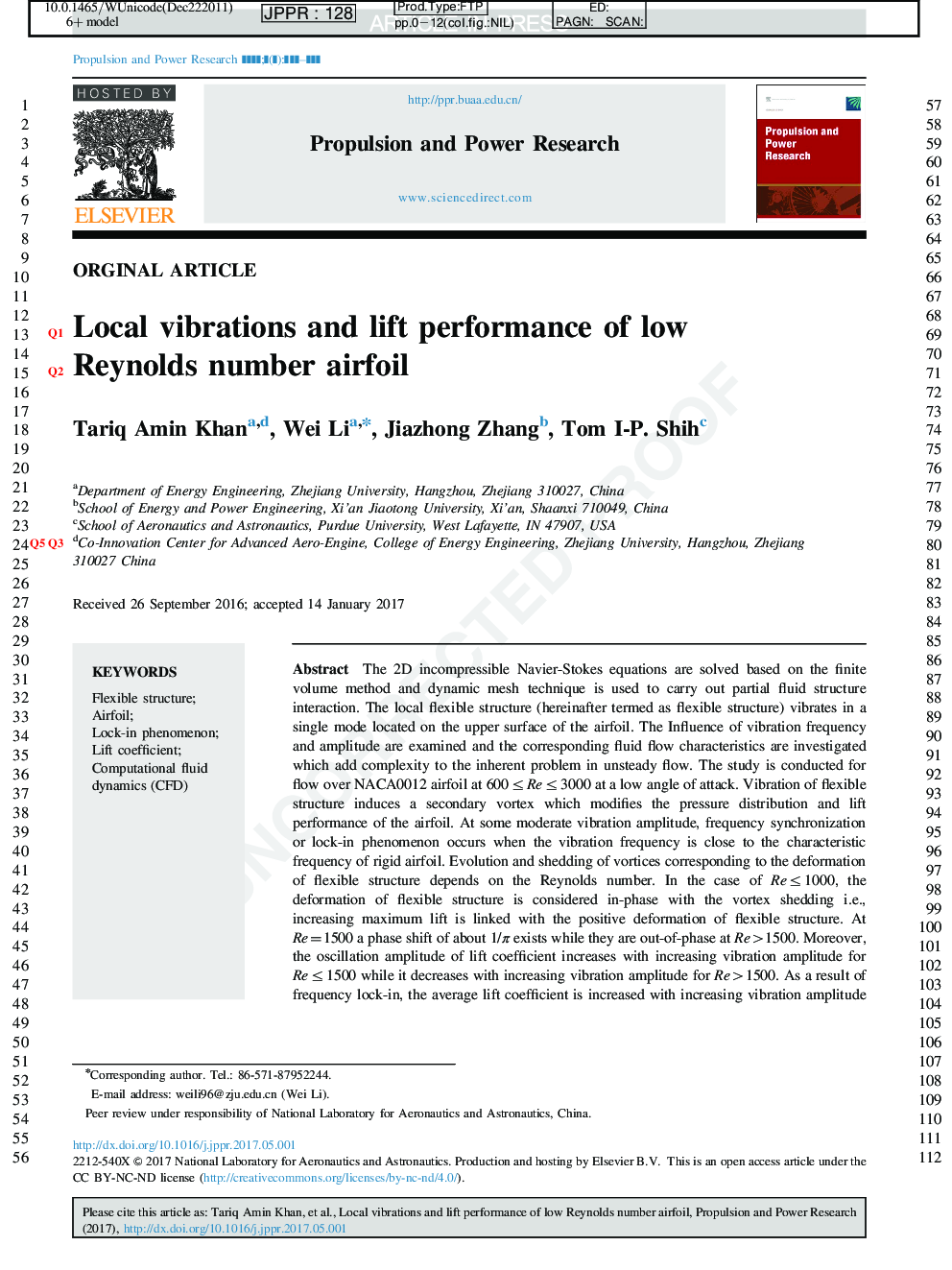| کد مقاله | کد نشریه | سال انتشار | مقاله انگلیسی | نسخه تمام متن |
|---|---|---|---|---|
| 8059147 | 1520213 | 2017 | 12 صفحه PDF | دانلود رایگان |
عنوان انگلیسی مقاله ISI
Local vibrations and lift performance of low Reynolds number airfoil
ترجمه فارسی عنوان
ارتعاشات موضعی و عملکرد آسانسور کمر رینولدز کمپوست
دانلود مقاله + سفارش ترجمه
دانلود مقاله ISI انگلیسی
رایگان برای ایرانیان
کلمات کلیدی
موضوعات مرتبط
مهندسی و علوم پایه
مهندسی انرژی
مهندسی انرژی و فناوری های برق
چکیده انگلیسی
The 2D incompressible Navier-Stokes equations are solved based on the finite volume method and dynamic mesh technique is used to carry out partial fluid structure interaction. The local flexible structure (hereinafter termed as flexible structure) vibrates in a single mode located on the upper surface of the airfoil. The Influence of vibration frequency and amplitude are examined and the corresponding fluid flow characteristics are investigated which add complexity to the inherent problem in unsteady flow. The study is conducted for flow over NACA0012 airfoil at 600â¤Reâ¤3000 at a low angle of attack. Vibration of flexible structure induces a secondary vortex which modifies the pressure distribution and lift performance of the airfoil. At some moderate vibration amplitude, frequency synchronization or lock-in phenomenon occurs when the vibration frequency is close to the characteristic frequency of rigid airfoil. Evolution and shedding of vortices corresponding to the deformation of flexible structure depends on the Reynolds number. In the case of Reâ¤1000, the deformation of flexible structure is considered in-phase with the vortex shedding i.e., increasing maximum lift is linked with the positive deformation of flexible structure. At Re=1500 a phase shift of about 1/Ï exists while they are out-of-phase at Re>1500. Moreover, the oscillation amplitude of lift coefficient increases with increasing vibration amplitude for Reâ¤1500 while it decreases with increasing vibration amplitude for Re>1500. As a result of frequency lock-in, the average lift coefficient is increased with increasing vibration amplitude for all investigated Reynolds numbers (Re). The maximum increase in the average lift coefficient is 19.72% within the range of investigated parameters.
ناشر
Database: Elsevier - ScienceDirect (ساینس دایرکت)
Journal: Propulsion and Power Research - Volume 6, Issue 2, June 2017, Pages 79-90
Journal: Propulsion and Power Research - Volume 6, Issue 2, June 2017, Pages 79-90
نویسندگان
TariqAmin Khan, Wei Li, Jiazhong Zhang, Tom I-P. Shih,
